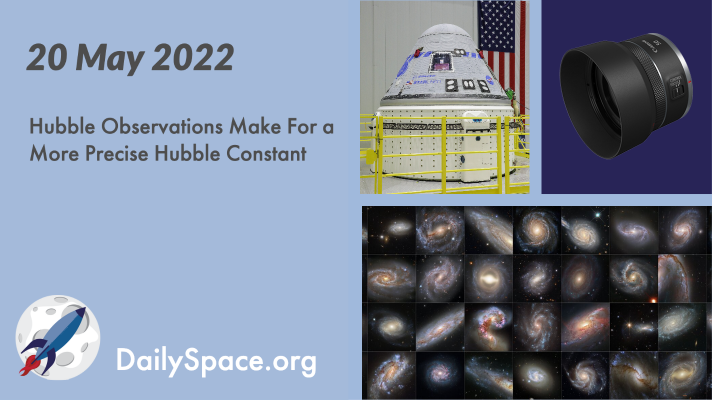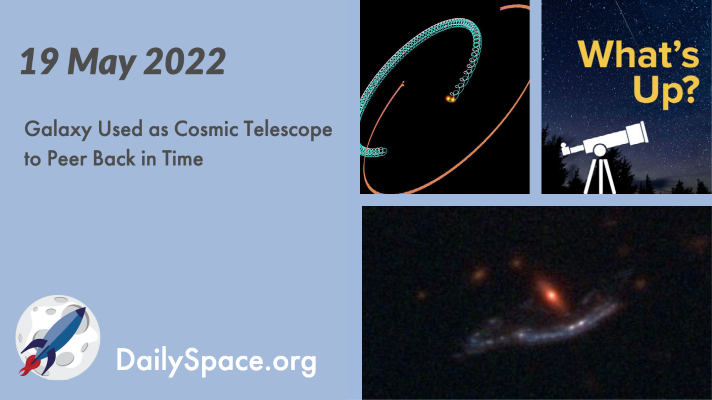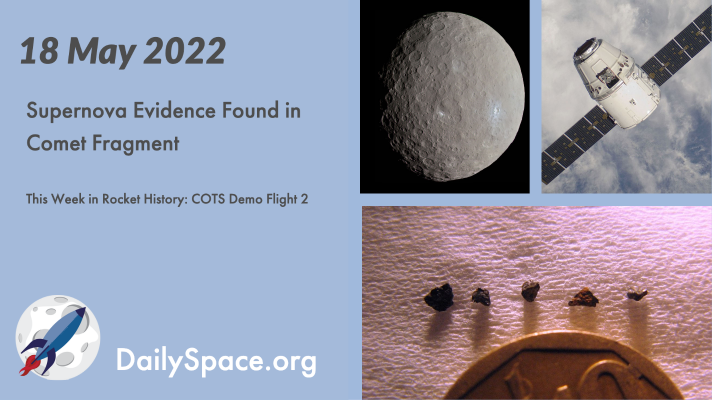
May 21, 2022 | Crewed Space, Daily Space, Galaxies, Mars, Review, Rockets, Rovers, Spacecraft, Stars, Supernovae
Over the past three decades, astronomers around the world have been using the observations of the Hubble Space Telescope to more precisely calculate the expansion of the universe. And they have converged on a precision of just over 1%. Plus, Boeing launches Starliner, Voyager 1 struggles, and Erik reviews his favorite camera lens.

May 20, 2022 | Daily Space, Earth, Galaxies, Moon, Sky Watching, Spacecraft, Star Forming Region, Stars, Supernovae, The Sun
With a groundbreaking technique, astronomers have used a galaxy as a gravitational lens to backlight two hydrogen clouds, peering back 11 billion light-years at our early universe. Plus, volcano water on the Moon, a quadruple star system, and this week’s What’s Up takes a careful look at the Sun.

May 19, 2022 | Asteroids, Comets, Daily Space, Earth, Mars, Our Solar System, Random Space Fact, Rockets, Space History, Spacecraft, SpaceX, Supernovae, The Sun
A forensic analysis of the element concentration found in the Hypatia stone finds evidence in the cometary fragment, which may have impacted Earth 28 million years ago, of a supernova origin story. Plus, Ceres, Mars, and this week in rocket history, we look back at SpaceX’s COTS Demo Flight 2.

May 18, 2022 | Astrobiology, Bennu Mapper, Daily Space, Earth, Galaxies, Guest Interview, Nebulae, Rockets, Space China, SpaceX, Starlink
A team of scientists combined stellar locations from the Gaia mission with dust and cloud maps from the WISE and 2MASS catalogs to create amazing three-dimensional images of the California Cloud and Orion A Cloud. Plus, rocket launches, the origin of carbon, and an interview with Dani DellaGiustina, principal investigator for the OSIRIS-APEX mission.

May 12, 2022 | Daily Space, Earth, JWST, Mars, Physics, Random Space Fact, Science, Space History, Spacecraft, Stars, The Sun
A ninth-magnitude star in our neighborhood of the Milky Way has been found to contain 65 different elements, including large proportions of heavier elements like gold. This star required either a supernova or a neutron star merger to form. Plus, another solar flare, a strong marsquake, cosmic rays, cookies, and this week in rocket history, we look back at STS-84.

May 11, 2022 | Active Galaxies, Asteroids, Citizen Science, Daily Space, Galaxies, Guest Interview, Mars, Perseverance, Rockets, Space China, Spacecraft, SpaceX, Starlink, Supermassive Black Holes
A luminous black hole already classified as an active galactic nucleus brightened suddenly in recent ground and space observations, and the cause may be due to a sudden flip in the magnetic poles. Plus, community science, rockets, Ingenuity, and an interview with Dr. Cathy Weitz from Planetary Science Institute.








 We record most shows live, on Twitch. Follow us today to get alerts when we go live.
We record most shows live, on Twitch. Follow us today to get alerts when we go live.